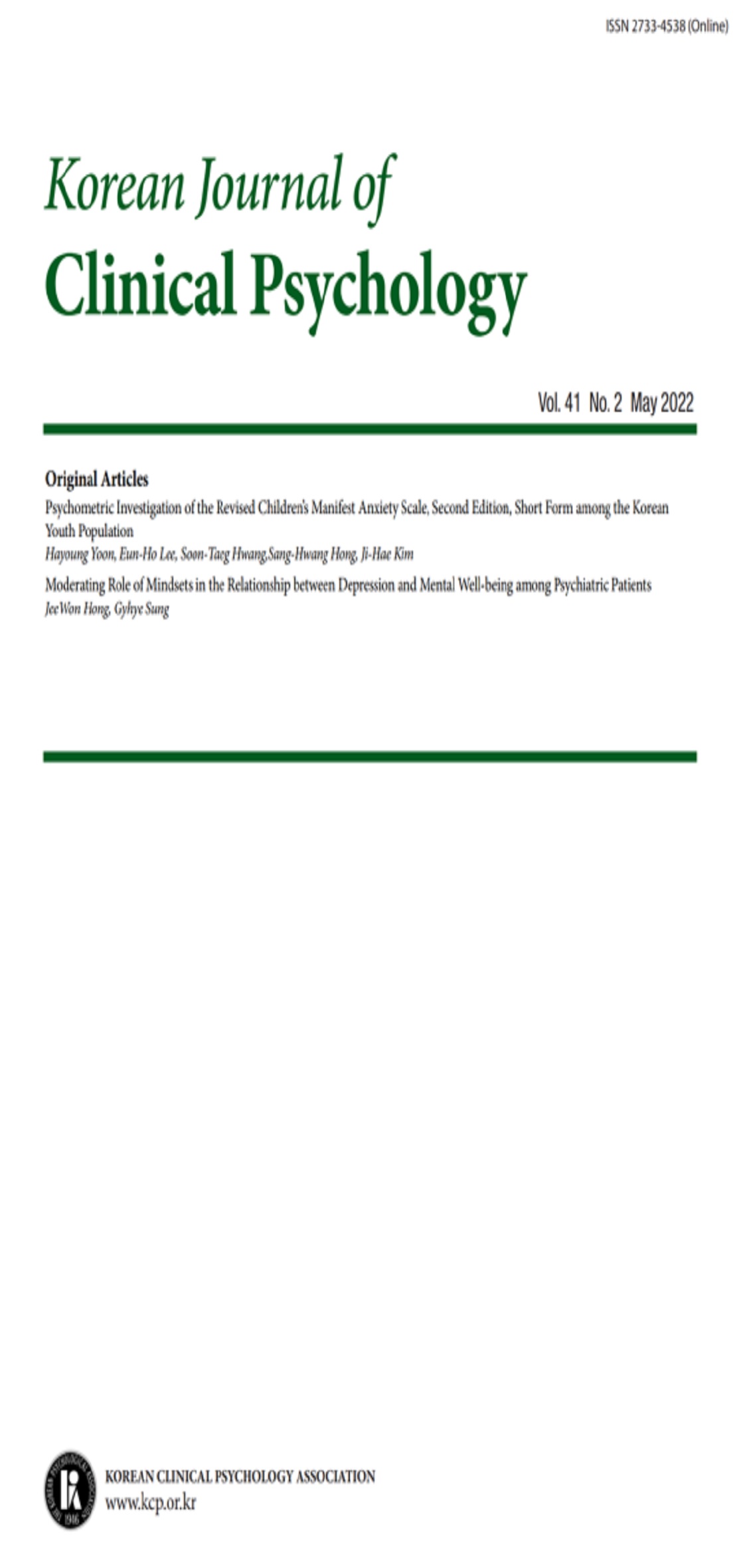open access
메뉴
open access
메뉴 E-ISSN : 2733-4538
E-ISSN : 2733-4538
본 연구는 성격평가질문지(PAI) 임상척도의 진단과 진단변별 기능을 알아보는데 목적이 있다. PAI 임상척도의 진단기능을 알아보기 위해 정상, 우울장애, 양극성장애, 정신분열병, 알코올의존 및 향정 집단의 척도와 하위척도 점수를 비교하고 각 집단에서 임상척도와 그 하위척도의 점수가 분할치 이상으로 상승하는 백분율을 계산하였다. 그 결과 DEP와 ANX 척도점수는 우울장애, MAN 척도점수는 양극성장애, PAR 척도점수는 정신분열병, ALC 척도점수는 알코올의존, DRG 척도점수는 향정 집단에서 다른 집단보다 유의미하게 높았고 척도가 분할치 이상인 백분율도 각 척도와 관련된 장애에서 가장 높았다. 임상척도의 진단집단 변별기능을 알아보기 위해 판별분석한 결과 5가지 진단변별요인이 도출되었고 한 가지 임상척도가 한 가지 진단변별요인을 구성하고 있는 것으로 나타났다. 그리고 진단집단별 적중률은 정상 91.0%, 우울장애 54.3%, 양극성장애 57.6%, 정신분열병 50.6%, 알코올의존 92.9%, 향정범 71.6%이었고 전체 분류정확률은 73.8%이었다. 이러한 연구결과는 PAI의 각 임상척도는 원래 측정하고자 했던 장애집단을 진단하고 변별하는데 유용하다는 것을 지적하는 것이다.
This study analyzed the diagnostic and differential diagnostic function of the PAI clinical scales. To investigate the diagnostic function of the clinical scales, scale and subscale scores of normal, depression, bipolar, schizophrenia, alcoholic, and drug offender were compared. In each group the percentage of clinical scales and subscales exceeding a T score of 65(cutoff score) were calculated. DEP and ANX scores in depression, MAN score in bipolar, PAR score in schizophrenia, ALC score in alcoholic, and DRG score in drug offender were significantly high, respectively. The percentage of these scales exceeding the cutoff scores were the highest in the corresponding group. In the clinical scales, five diagnostic discriminant factors were derived. The PAI clinical scales found out to be composed in single diagnostic discriminant factor. The hit rate of normal was 91.0%, depression was 54.3%, bipolar was 57.6%, schizophrenia was 50.6%, alcoholic was 92.9%, and drug offender was 71.6% and the overall classification rate was 73.8%. These results suggest that the clinical scales are useful to diagnose and discriminate individual disorders that are to be measure.
